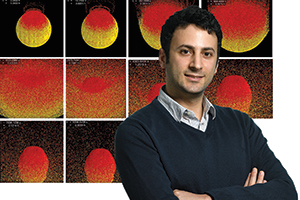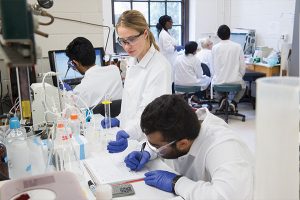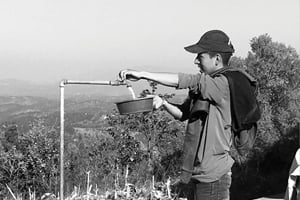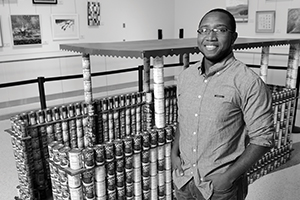
Asteroid Architecture
Knowing whether an asteroid is a giant hunk of rock or a floating gravel pile—or a mix of the two—will make a big difference in strategies that researchers might devise to prevent one from striking Earth or to drill inside.

Knowing whether an asteroid is a giant hunk of rock or a floating gravel pile—or a mix of the two—will make a big difference in strategies that researchers might devise to prevent one from striking Earth or to drill inside.

In a class fondly known as Senior Lab, chemical and biomolecular engineering students begin to transform from passive receivers of knowledge into engineers who troubleshoot equipment quirks and adjust experiments on the fly.

A team of eight undergraduate and graduate engineering students are developing a system that can shuttle food to hungry customers across the Johns Hopkins Homewood campus.

Clark Kent has Superman. Peter Parker has Spider-Man. And Justin Stith has Jay. The Johns Hopkins Blue Jay, that is.

Residents of the tiny Guatemalan village of Chicorral used to struggle up and down a steep ravine to fetch water from a stream for cooking, bathing, and drinking. Thanks to a solar-powered pump installed a few years ago by Johns Hopkins engineers, water now comes directly into their homes via a pipe.

Civil Engineering students transformed 42 cases of beans into a replica of one of Baltimore’s iconic blue and white water taxis to support the Maryland Food Bank.

Erratic video-streaming on the internet is annoying. For some applications, however, the wait can cost businesses money or even be downright dangerous.

For all its good intentions, the federal government’s housing choice voucher program is not helping America’s poor as intended, says PhD student Philip Garboden.

Cori Grainger ’20 chases her dreams in an emotional documentary about the Lethal Ladies, a step team at the Baltimore Leadership School for Young Women.